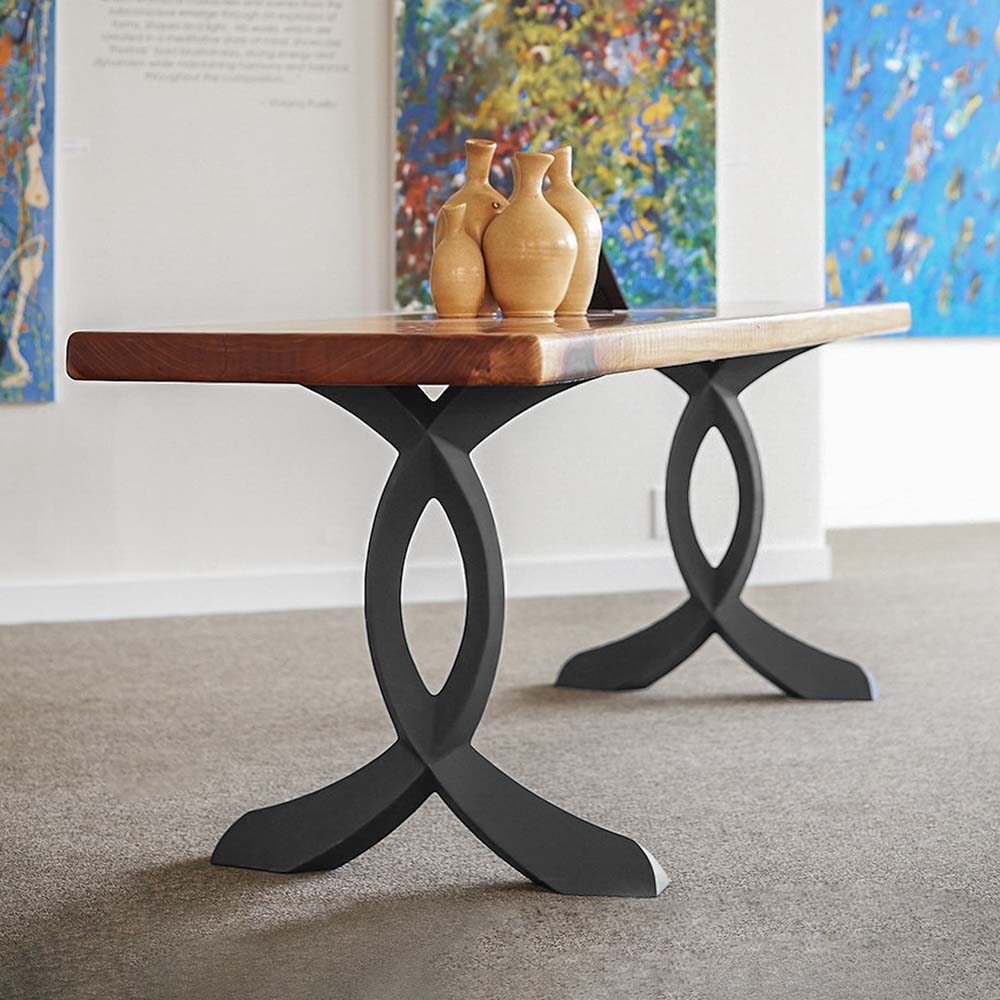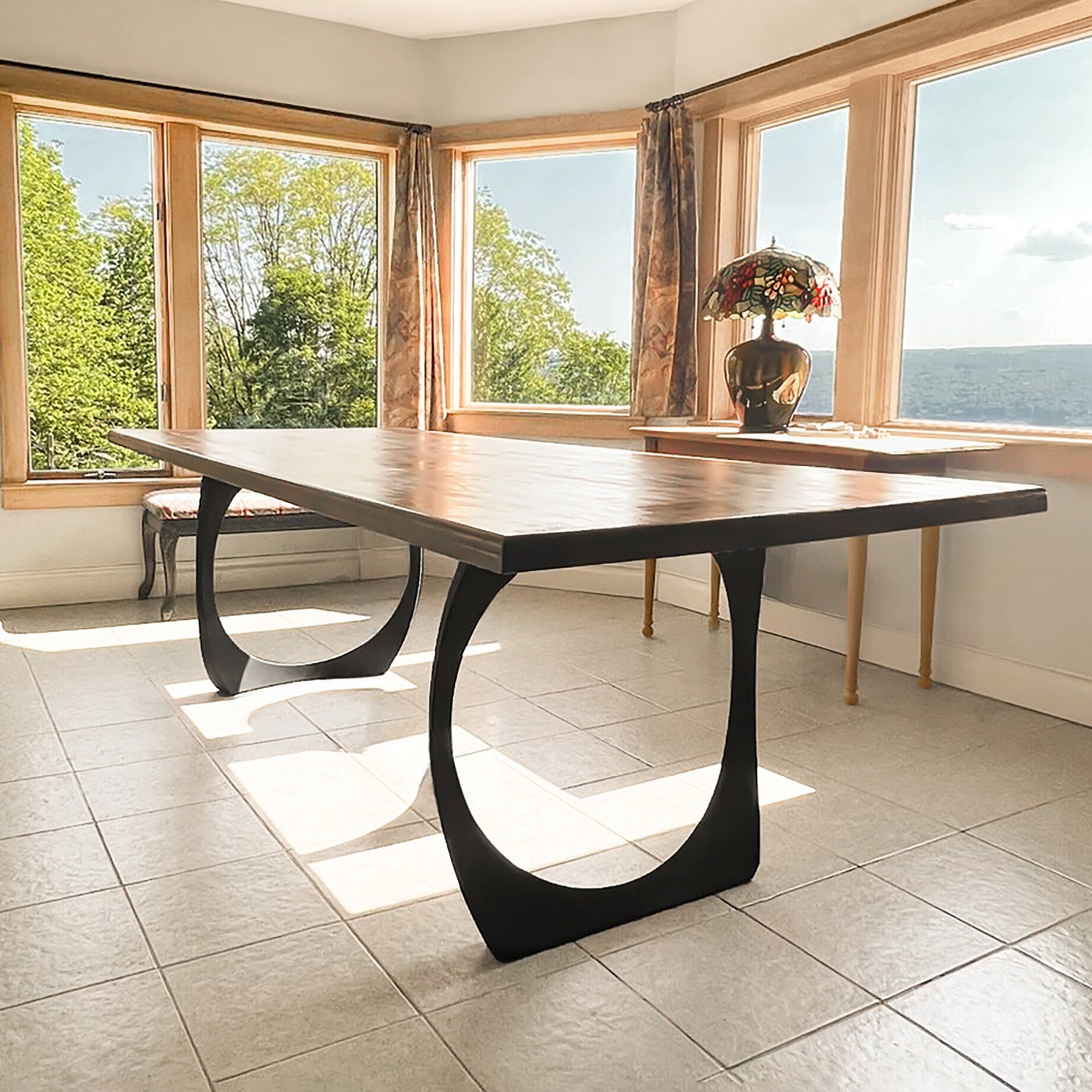Top Fads in Dining Room Table Legs to Raise Your Dining Area
Top Fads in Dining Room Table Legs to Raise Your Dining Area
Blog Article
The Ultimate Overview to Picking the Ideal Styles for Table Legs
Picking the most effective designs for eating table legs is a nuanced procedure that requires stabilizing visual allure with useful considerations. Whether you are attracted to the smooth lines of modern layouts, the heat of rustic farmhouse styles, or the timeless beauty of traditional workmanship, each option can dramatically influence your eating space. Custom-made alternatives supply a possibility for individual expression, guaranteeing your table comes to be an unique centerpiece. Understanding the material and surface options even more enhances this decision-making process. As we explore these varied styles, you'll find exactly how to balance type and feature in your eating location.
Modern Eating Table Legs
In the world of modern furniture design, modern-day eating table legs stand out for their smooth and ingenious appearances. Defined by tidy lines and minimalist forms, these legs often use materials such as stainless steel, chrome, and tempered glass to develop an advanced visual appeal. Not just do they enhance the total sophistication of the table, yet they likewise contribute to its architectural integrity and practical flexibility.
Among the essential features of contemporary dining table legs is their versatility to various table tops, from marble and glass to wood and crafted surfaces. Developers regularly experiment with geometric forms, including angular, conical, and also sculptural types, to add an one-of-a-kind touch to each item. This strategy not just guarantees a modern look however additionally permits better customization to match individual tastes and indoor design.
Modern dining table legs also emphasize ease of upkeep and resilience. Thus, modern dining table legs embody both form and function, making them a preferred selection in today's layout landscape.
Rustic Farmhouse Designs
While contemporary table legs mesmerize with their sleek, minimal layouts, rustic farmhouse styles supply a contrasting yet just as engaging method to furniture visual appeals. Rooted in simpleness and functionality, rustic farmhouse table legs frequently feature durable, strong wood constructions that evoke a feeling of heat and custom. These designs typically incorporate redeemed or distressed timber, adding character and a vintage charm to any kind of dining space.
Among the most distinguishing attributes of rustic farmhouse table legs is their substantial, sturdy look. Often crafted from oak, yearn, or other sturdy woods, these legs can consist of a variety of forms, from straight and square to elegantly turned or tapered designs (dining room table legs). The craftsmanship emphasizes durability, with hand-finished details that highlight the natural grain and flaws of the timber, making each piece distinctively stunning
Furthermore, rustic farmhouse legs regularly utilize classic joinery strategies, such as mortise and tenon joints, making sure stability and durability. This design is particularly appropriate for developing a comfy, inviting environment, excellent for family celebrations and communal eating experiences. By incorporating rustic farmhouse table legs, one can effortlessly blend capability with timeless aesthetics, accomplishing an ageless appeal that enriches the dining atmosphere.
Classic and Classic Layouts
Enduring sophistication specifies timeless and read timeless dining table leg styles, flawlessly blending tradition with class. These layouts catch the significance of enduring beauty, typically including detailed craftsmanship that admires historic designs while preserving a contemporary charm (dining room table legs). The visual balance achieved through such legs ensures they remain relevant and stylish across various interior settings, from traditional to modern-day homes

Furthermore, the convenience of traditional eating table legs enables them to match various tabletop layouts, creating a natural and unified dining experience. Their timeless nature guarantees that they endure altering trends, making them a useful financial investment for any kind of eating space. Whether you seek downplayed refinement or grandiose appeal, classic eating table legs supply a best mix of kind and feature, enhancing the overall aesthetic of your dining area.
Customized and Special Alternatives
When it comes to dining table leg designs, customized and distinct choices use an unique method to display personal taste and imagination. These options enable house owners and designers to move beyond conventional designs, creating a table that truly mirrors specific style and the total motif of the dining space. Customized legs can be crafted in a myriad of shapes, sizes, and patterns, from intricate makings to modern-day geometric kinds, enabling countless opportunities.
Special eating table legs can serve as a prime focus in a space, attracting attention and sparking conversation. Legs made to look like tree branches can bring a touch of nature indoors, while sculptural steel legs can impart a contemporary and industrial panache. One more popular fad is integrating blended media, such as integrating wood with steel or glass, to produce a striking comparison and added visual rate of interest.

Material and Complete Selections
Picking the appropriate product and coating for eating table legs is vital to attaining the wanted visual and capability. The option of materials can considerably affect the table's resilience, upkeep, and general design. Typical materials for eating table legs include wood, metal, and acrylic.
Timber continues to be a classic choice, providing warmth and versatility. Maple, oak, and walnut are preferred choices because of their robustness and rich textures. Steel legs, such as those made from stainless steel or More Help iron, provide a modern and commercial look. They are known for their toughness and low maintenance. Polymer legs, although less traditional, supply a modern and airy feeling, suitable for smaller rooms or minimalist designs.
The finish applied to the legs better improves their appearance and resilience. Timber legs can be discolored to boost their natural grain or painted for a more uniform appearance. Metal legs could be polished for a smooth surface or powder-coated for added security versus wear and corrosion. Polymer legs generally require minimal finishing but take advantage of regular cleaning to keep their clarity.
Eventually, the selection of product and finish must straighten with the dining table's general layout, usage requirements, and the existing design of the eating room.
Conclusion
The option of eating table legs substantially impacts the aesthetic and performance of a dining space. Modern designs supply streamlined, minimalist appeal, while rustic farmhouse designs give heat and personality. Cautious consideration of these factors guarantees a harmonious and aesthetically attractive dining area.
Report this page